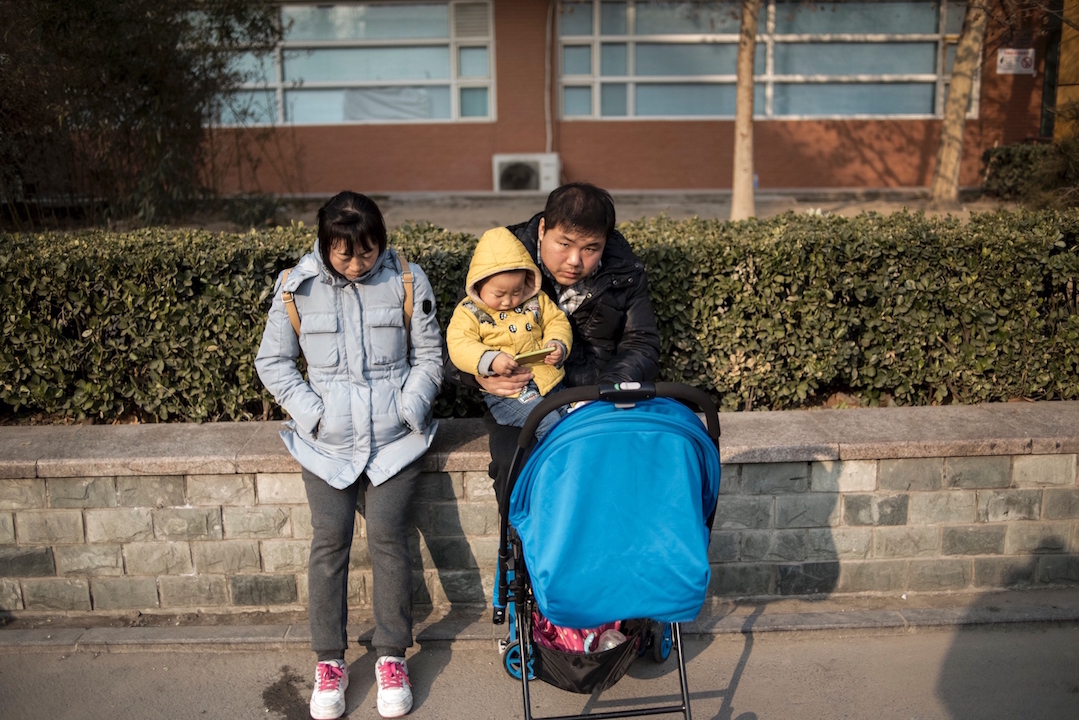Perhaps no government policy anywhere in the world affected more people in a more intimate and brutal way than China’s one-child policy. In the West, there’s a tendency to approve of it as a necessary if overzealous effort to curb China’s population growth and overcome poverty. In fact, it was unnecessary and has led to a rapid aging of China’s population that may undermine the country’s economic prospects. The scholar Wang Feng has declared the one-child policy to be China’s worst policy mistake, worse even than the Cultural Revolution or the Great Leap Forward (which led to the worst famine in world history). The one-child policy broke up families and destroyed lives on an epic scale—and although it officially ended last fall, it continues to ripple through the lives of Chinese and the 120,000 Chinese babies who were adopted in America and other Western countries.
It has often been said, in China and abroad, that those adopted babies, mostly girls, were unwanted in a male chauvinist society and abandoned by their parents. Many of those children, some of them now young adults, should know that it’s far more complicated than that. They are the products not of unloving parents, not so much of a misogynist tradition, but of a government policy that sundered families.
If you’re a (precocious) Chinese-born 12-year-old girl reading this essay in your adoptive American home, then you just might be the girl whose birth name was Shengshi, Victory, whose story is told in China’s Hidden Children, by Kay Ann Johnson of Hampshire College. Victory’s story lays bare how the one-child policy actually unfolded and how so many adopted children were not “abandoned” in any normal sense of the word.
Media
04.15.16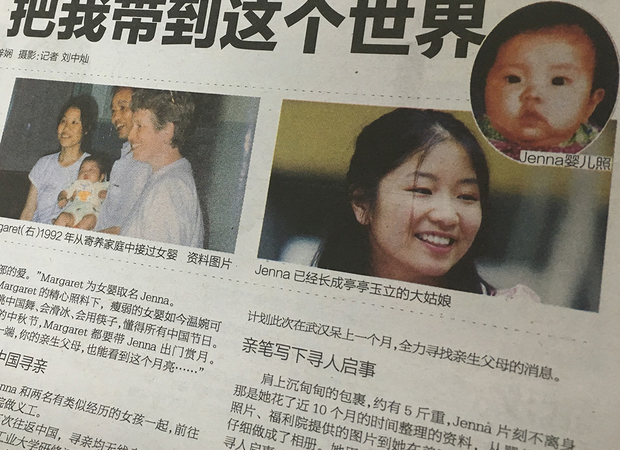
A ‘Lost’ Daughter Speaks, and All of China Listens
Xu Guangwen and his wife, Jiang Lifeng, were villagers who had a son in 1994. The one-child policy—introduced by the central government of China in 1980—is something of a misnomer, because in some circumstances a second or even third child is permitted: if Xu and Jiang had had a daughter first, they might have been given permission after several years to bear another child. But because they had a son first, that was it. Still, both wanted another child, and Jiang in particular wanted a daughter. So they began to plot.
All fertile married women in their region were obliged to pee into a cup for a pregnancy test every three months; a positive result could lead to a mandatory abortion. Any couple that somehow evaded the controls risked a fine, the demolition of the family home, and forced sterilization. Yet when Jiang became pregnant in 2003, she and her husband decided to keep the baby, hoping for a girl. Jiang secretly carried a friend’s fresh urine to the pregnancy tests and used it to achieve a negative result, and in the final months of the pregnancy she hid in her mother’s house and delivered there. Jiang and Xu named their baby Victory because she had arrived against all odds. They decided that if questioned by the authorities, they would claim that they had found Victory outside and taken her in because no one else would.
Unfortunately, a new official had been dispatched to this township to oversee a crackdown on family planning. Officials now had their salaries docked if there were babies born without permission in their localities, and the village leader had lost half his salary for that reason. The local official in charge of family planning promised a $380 reward, presented anonymously, to anyone who informed on an unauthorized baby. Someone reported on Victory, and seven men showed up one day, approaching the home from all directions to prevent escape. They grabbed nine-month-old Victory as she slept and left in a van for the family planning office.
Xu and Jiang spent eight hours crying and pleading with the family planning officials. They confessed that Victory was their biological child and offered anything to keep her. Xu promised to pay the highest possible fine for an unauthorized birth. The officials brushed him off, so he said he would borrow and pay double that. The officials still refused. They said that Victory had to be taken to an orphanage, and they forced Xu to sign documents saying that he had found the baby in the fields—but there was still hope that they could adopt Victory the next day from the orphanage.
Media
01.06.16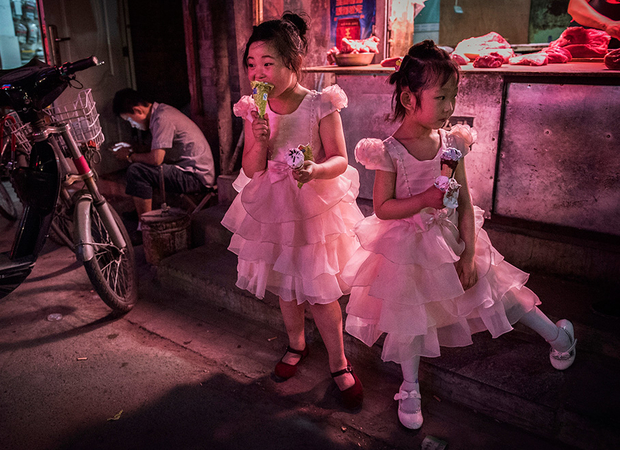
Is it Too Late for a ‘Two-Child Policy’?
from U.S.-China DialogueJiang and Xu stayed up all night and were at the orphanage when it opened the next morning, explaining that the child brought in overnight was theirs and that they wanted to formally adopt her. The orphanage wouldn’t let them inside. Jiang and Xu begged but never even got to see Victory. They sent other relatives to try to adopt the child, but they too were rejected. It may be that the orphanage preferred to send Victory abroad because foreigners paid more for an adoption and often showered the orphanage with gifts to show their thanks.
“For many months, Jiang was barely able to eat or speak and cried day and night,” Johnson writes.
Her family feared for her health and sanity. At night she would dream that her child was back with her, that her life was happy and normal; then she would wake with a gasp, realizing that the reality was a nightmare. It took Jiang almost three years to “calm her heart” and go on. She had a wonderful son and a husband and needed to find life again.
In the end the orphanage held Victory for more than a year as the adoption paperwork was processed. One can only imagine how traumatizing this was for the child, yanked from her loving parents and housed on a cot in an institution. Finally, the orphanage gave Victory to a childless American middle-class couple. Victory presumably has been raised in the U.S. with love and in financial comfort, enjoying a better education and more opportunities than if she had remained in China. But she was still stolen: I hope she doesn’t think, as some adopted Chinese children do, that she was “abandoned” by misogynist parents who discarded her because she was a girl.
Each of the books under review offers a searing, important, and eminently readable exploration of China’s one-child policy, with Mei Fong’s One Child the more comprehensive and Kay Ann Johnson’s China’s Hidden Children more focused on adoptions. The one-child policy, unlike many Chinese missteps, was not a product of Chairman Mao’s zeal or ideology; in fact, China was extricating itself from Maoism when it adopted the one-child policy.
Mao had earlier made the opposite error, doubting any need for family planning. When Ma Yinchu, the American-educated president of Peking University, suggested in the 1950s that China should try to curb runaway population growth, Mao fired him. But as Fong, a former reporter in China for The Wall Street Journal, writes, by the early 1970s China had adopted a highly successful voluntary family planning program called “Later, Longer, Fewer.” Its slogan was “One child isn’t too few, two are just fine, three are too many.” And within about a decade it managed without coercion to reduce the average number of births per woman from six to three, a remarkable achievement. It’s rarely acknowledged that the biggest drop in Chinese fertility came not from the one-child policy, but earlier during this voluntary birth control campaign. If it had continued, China’s birth rates would have continued to drop, as they have for the rest of the region (Malaysia today averages just under two births per woman; Bangladesh averages 2.2).
China’s leaders wanted sharper cuts. There were internal conferences in which some demographers and economists warned against cutting back too abruptly, with one expert named Liang Zhongtang arguing that it would amount to a “terrible tragedy.” That was not what the leadership wanted to hear, and for the Politburo members it was an easy step from central planning of the economy to central planning of family size. On September 25, 1980, China’s Communist Party issued an open letter to Party members asking them to limit themselves to one child. That was the first announcement of a policy that quickly grew to encompass compulsory sterilization and forced abortion, and sometimes the kidnapping and sale of children who were unauthorized. Fong writes that it was “the world’s most radical social experiment, which endured for 35 years and continues to shape how one in six people in this world are born, live, and die.”
Books
12.16.15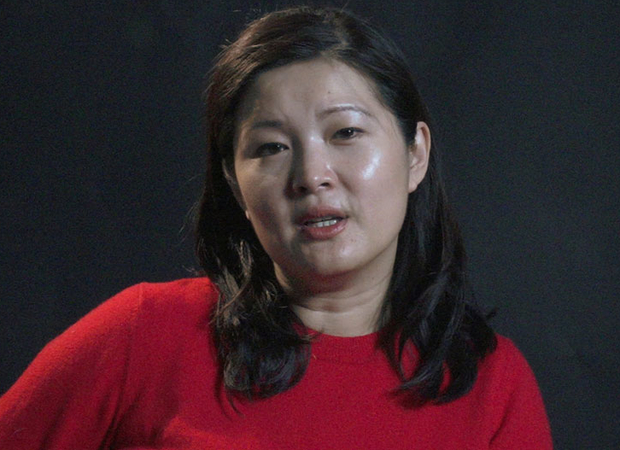
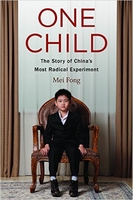
One Child
Deng Xiaoping had just taken the helm of China in 1978, opening the country to the West, and there was then in the West considerable sympathy for Chinese efforts to modernize and curb population growth. It was widely recognized that China had a major population problem. By the Deng era, the West had been shaken by Paul Ehrlich’s book The Population Bomb (1968), and liberals and conservatives alike were agreed on the need for global population control efforts. This was an era when Republicans strongly backed funding for birth control at home and abroad, and when the Republican vice-president, George H.W. Bush, was nicknamed “Rubbers” for his advocacy of family planning.
So there were wise nods when China adopted the one-child policy, even if reports of abuses emerged very quickly. Michael Weisskopf of The Washington Post should have won a Pulitzer Prize for his devastating accounts in the early 1980s of how brutally the policy was carried out. A Stanford Ph.D. student, Steve Mosher, also tried to warn of the brutality of the policy; apparently in deference to China, Stanford expelled Mosher, accusing him of misconduct (whatever misconduct there may have been, it paled beside what Mosher was trying to stop).
In retrospect, Western sympathizers were right about the need to curb population growth in China—and blind to the brutality of China’s policy. Partly that’s because China covered up the abuses and pretended that the policy was essentially voluntary, backed by fines but not by force. As China and its enthusiasts presented it, the policy was like a Western tax meant to create incentives for some behaviors and disincentives for others. This deception was possible because the worst abuses unfolded in the countryside, and intellectuals in the cities with whom Westerners mixed had less inclination to violate the policy and were less likely to be dragged off if they did.
In fact, urban Chinese elites also often approved of the one-child policy. Opinion polls in China are always suspect, but one found that a majority of Chinese bought the government propaganda and backed the one-child policy. Human rights campaigners called for free speech, but family planning was seldom a major concern for them. An exception was Chen Guangcheng, the blind lawyer who was himself from a village and was outraged by the horrors inflicted on rural people around him. He writes in his recent memoir about how he represented clients such as a 59-year-old man who was kidnapped by family planning officials searching for the man’s daughter, whom they wanted to sterilize against her will. The officials grilled the man about where his daughter could be found, and when he said he didn’t know they clubbed him unconscious and finally dumped his bloody body near a bridge.1
I lived in China in the late 1980s and early 1990s as the Beijing bureau chief for The New York Times and was initially ambivalent about the one-child policy: yes, it was harsh, but it was also reducing population growth and raising living standards. Then I began coming across abuses that were simply unconscionable, such as the assault on Li Qiuliang, a 23-year-old woman in Hunan province. At the end of 1992, family planning officials showed up at her home when she was seven months pregnant and frail. Li had permission for her pregnancy and had done nothing wrong. But officials had birth slots for 1992 that would go unused, and they feared that they might have excess births in 1993. Since they would be punished with salary cuts or demotions if births exceeded the quota in 1993, they formed an “early birth shock brigade” to round up very pregnant women and induce the births before the new year.
“My daughter-in-law’s health isn’t good, and she may not be able to get pregnant again,” Li Qiuliang’s mother-in-law pleaded. “Let her have one baby, someone to look after her and my son when they grow old. It doesn’t matter if it’s a boy or a girl. After it’s born, she’ll go get sterilized.” The officials paid no attention. They took Li to a clinic and ordered a doctor to induce labor. The doctor protested that Li was too weak, but the officials ordered him to proceed. Li hemorrhaged, fell unconscious, and almost died; her life was saved in a hospital, but she was left crippled. The baby died after nine hours.2
China has claimed that the one-child policy averted 400 million births over 35 years, but that’s a vast exaggeration; demographers estimate that the real total was half that, maybe less. And while there were economic benefits, they were modest. Fong quotes an economist as estimating that the one-child policy contributed about one tenth of one percentage point annually to China’s economic growth; the reality is more complicated. When fertility is cut, there is a significant but temporary demographic dividend to economic growth; with fewer children, a larger share of the population is working. But when the population bulge moves into retirement, as is beginning to happen in China, there is an equivalent economic cost. As China’s population ages, the labor force is beginning to contract and will continue to do so indefinitely. By 2050, a quarter of China’s population is expected to be over 65, and by 2100 it may have shrunk by hundreds of millions, possibly by half. All that dampens economic performance.
The impact of the one-child policy was compounded because of the traditional preference for a son. When my wife and I had our eldest child while we lived in Beijing, Chinese friends would sometimes first ask us the sex; only after hearing that it was a boy would they congratulate us. Eldest daughters sometimes used to be named Laidi or Yindi, meaning “bring a younger brother.” So when families were allowed just one child, they didn’t want to use up that quota on a daughter.
Once ultrasound was widely available in the early 1990s it became routine to bribe the ultrasound operator to learn the sex of the fetus and then, if the fetus was female, to get an abortion. A Chinese colleague and his wife obtained permission to have a baby and were thrilled when she became pregnant, but soon after they explained that she had decided to get an abortion after all; it was obvious that they had discovered through ultrasound that she was carrying a girl, and they wanted to try for a boy instead. Less than a year later, she became pregnant again and bore a son.
The upshot was that China’s sex ratio at birth began to skew wildly, so that 118 boys were born for every hundred girls. The result is that millions of young men have become guang gun, bare branches, biological dead ends. They will never be able to marry, and it’s not clear what a society will be like with that many surplus males. A dozen years ago, two scholars, Valerie Hudson and Andrea den Boer, wrote a provocative book, Bare Branches, about the security implications of the male surplus in China, India, and other parts of Asia. They note that disproportionately male societies are often authoritarian and violent, and that governments may try to accommodate the surplus through militaristic actions. Some people think that China’s increasingly assertive nationalism over disputed islands is already, in part, a reflection of all those restless Y chromosomes.
The surplus of men has in some ways empowered Chinese women (an echo of the fact that in American history the first state to give women the vote was overwhelmingly male Wyoming, as a lure to attract more). Daughters often used to play second fiddle to their brothers, but as a result of the one-child policy girls have no brothers and parents are completely invested in their education and success. The shortage of women also gives them an advantage in traditional marital negotiations. A Chinese man on the marriage market is expected to have a home and sometimes pay a bride price, or caili, of thousands of dollars to his fiancée or her family. China has thus seen the emergence of runaway brides who accept a hefty caili and then disappear.
There are also creepier market responses to the shortage of brides: life-size, anatomically correct female dummies, selling for $5,000 and up. “If China is running out of women, why not make fake women?” Fong explains. She interviews a manufacturer who experimented with skin substitutes (silicone and rubber), hair (synthetic and human), and breast size (C to EE). “They really are designed to take the place of real women,” says Vincent He, the factory owner, and he’s proud of their durability. “The nipples—they are very tough,” says He, tugging at one to demonstrate to Fong. “Normal ones could never withstand such treatment.”
In October 2015, China officially ended its one-child policy and announced that it will allow two children per couple. It’s not clear how this policy will be implemented, or whether this will mark the end of forced sterilizations and abortions. It may be more correct to think of it as a relaxation of a coercive policy rather than as its true demise. But it’s also true that expectations have changed over the last few decades and that many Chinese families today, especially urban ones, are content with just one or two children, even if they do not end up with a son. One survey found that of Chinese families who today have one child, 60 percent say the reasons have nothing to do with the one-child policy. The cost of educating a child is often the foremost obstacle.
Internationally, the most visible legacy of the one-child policy is the large number of Chinese-born children who have been adopted in the West. Johnson notes that China has a long tradition of informal adoption, and that more babies have been adopted domestically than internationally. But China cracked down on domestic adoptions precisely because they were being used to evade the one-child policy, as parents parked an eldest daughter with a relative while they tried again for a son. (Another evasion took advantage of the fact that a couple couldn’t be penalized for two children if they were twins: one baby would be hidden and then when a second arrived a year or so later, they would be reported together as twins.)
Johnson tells of a woman, Gao Wanru, who already had a son when she became pregnant again. Her family pressed her to get an abortion, because an unauthorized birth would lead her husband to be fired from his job as well as to a large fine and her forced sterilization. But Gao wanted another child, preferably a daughter, and eventually gave birth in secret to a daughter in her mother’s house. There was no way to keep the child and her husband’s job, so her family left the child at the doorstep of a distant relative whom they believed wanted a daughter, and then set off firecrackers so that the relative would open the door and find the baby.
At first everything went well: the relative kept the girl and raised her, and no one seemed to know her parentage. But when the girl was four, the family planning authorities got wind of her existence. They wanted the child removed from their area, so that she wouldn’t count as a local over-quota child. The adoptive mother confronted Gao, asking if she was the mother and would take the child back. Gao demurred, and the adoptive family paid a steep fine to the family planning authorities to keep the girl; Gao and her husband secretly sent money through a third party to the relative to defray the cost. Then when Gao’s husband was dying of cancer, the adoptive mother took the girl to see him in the hospital: the adoptive parents had figured out that he was the biological father and thought he should see his daughter before he died. Years later when the girl married, the adoptive parents invited Gao to the wedding: from the back, she watched her daughter wed.
It is often said that girls are unloved in China, abandoned for cultural reasons, and that this is why they have been forced to find refuge in the United States. There is obviously something to the idea that China has been a patriarchal society, but I think it’s too glib to suggest simply that these girls were abandoned by callous parents.
One of the stories that moved me in Johnson’s book is her account of a middle-aged couple, Li Rong and Wang Aiying, who had recently lost their only son, a 15-year-old, in a drowning accident. They were shattered. Then Li was walking by the garbage dump one evening when he heard the faint cry of a baby. Investigating, he found a newborn girl, barely alive and apparently left to die. Li scooped the baby up and ran home with her, fearing she would die in his arms, and then he and his wife warmed her up and fed her with powdered milk. They took turns staying awake around the clock for days to keep her alive. Li and Wang used all their savings to pay medical bills, and to try to cajole the authorities to give her an urban registration, a hukou necessary for attending school. Officials resisted giving the hukou, angering Li, who noted that he and his wife had saved the authorities the cost of raising the child. “Perhaps the government would have preferred she had died in the garbage dump,” he said.
Finally, Li and Wang obtained the documents, and the girl grew up and prepared for college exams. The parents sold their home and moved to a smaller one to finance their daughter’s studies at a four-year university. The girl is very close to them, and she worries that her parents are sacrificing too much for her education. Li and Wang have never told her that she is adopted, for fear that this news could damage her self-esteem. With few resources but abundant love, Li and Wang built an adoptive family whose strength would be hard to surpass in much richer families and countries.
Yet too often the authorities interfered with this nurturing instinct. Indeed, while it was never government policy, in some extreme cases in Hunan and Guizhou provinces the family planning authorities simply seized children born in violation of the one-child policy and sold them to orphanages. Some of these children ended up in American homes, according to China’s Caixin magazine.
One American adoptive father told Fong, as the family was hanging Christmas decorations, “I couldn’t help looking at my daughter and thinking, ‘If she hadn’t been adopted, she might be making those decorations in the factory, not hanging them.’” Fair enough. But these adopted children needn’t grow up thinking that they were cast off by parents who didn’t want them.
However well-intended it may have been, the one-child policy arose from a totalitarian approach to governing and violated the most fundamental of human rights—and it was also unnecessary, for the previous voluntary policy had already slashed fertility rates. Johnson offers this epitaph for the policy:
One can only hope that after more than thirty years, with a national total fertility rate well below replacement level in the last two censuses, the policy that has marked this era and scarred so many children and punished so many parents might finally come to an end, taking its place in the proverbial trash bin of history alongside other practices that, in retrospect, we can see as the atrocities that they always were.
- Chen Guangcheng, The Barefoot Lawyer: A Blind Man’s Fight for Justice and Freedom in China (Henry Holt, 2015), pp. 162–173; reviewed in these pages by Evan Osnos, July 9, 2015.↩
- I wrote about Li’s case in my book with Sheryl WuDunn, China Wakes: The Struggle for the Soul of a Rising Power (Times Books, 1994), pp. 238–239. A classified government document was my original source for Li’s case, but the authorities later insisted that the incident had not happened that way. Right.↩




